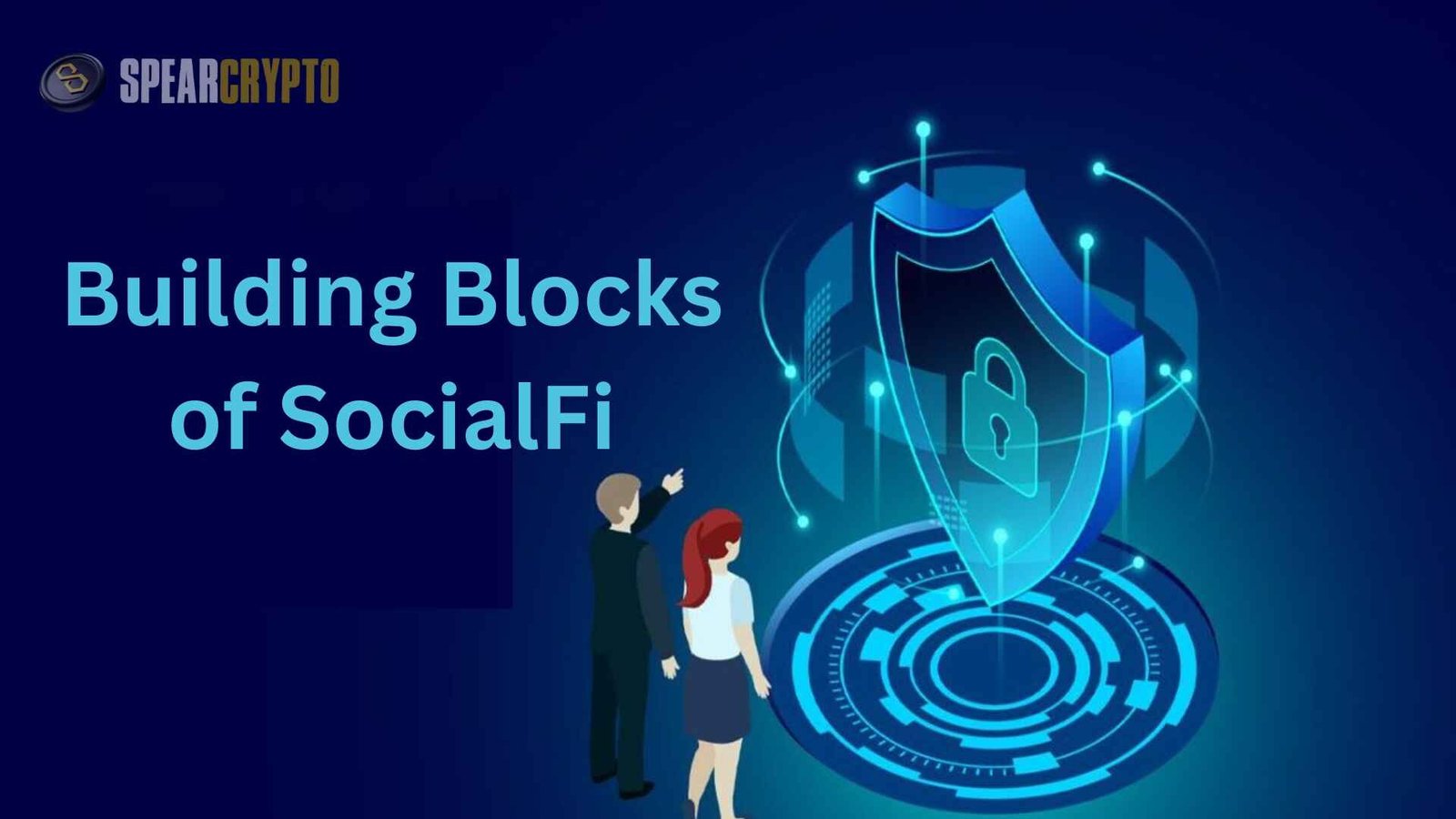
What is SocialFi? By fusing social media with decentralized finance (DeFi), SocialFi creates a new paradigm. When building, maintaining, and owning social media platforms and the information they generate, social media platforms provide a Web3 (decentralized) approach.
Those who use SocialFi are content creators, influencers, and participants looking to monetize their social media following and engagement and improve their data control and freedom of speech. While bitcoins are usually used for monetization, NFTs drive identity management and digital ownership.
The decentralized autonomous organization (DAO) nature of these platforms makes them more resistant to choices made by a central authority to prohibit content. With the rapid advancements in blockchain technology over the past few years, SocialFi’s infrastructure can now handle the high volumes of social media interactions.
Challenges of Web2 Social Media
About 58% of the global population uses social media at least once daily for 2 hours and twenty-seven minutes. However, a few influential organizations and their stockholders profit from all the focus, participation, and data produced. “If the product is free, you are the product.” This one-liner is the result of incentives not being aligned.
When platforms block content creators from discussing specific themes, we often see centralized decision-making. A decentralized curation method, if any, would be more in line with Web3 principles, even though these procedures are typically in place to safeguard the broader user base from damaging posts.
Thirdly, digital ownership and the capacity to trace ownership have been difficulties for Web2 apps. This is paramount for artists and producers who distribute their work online. Still, without sufficient safeguards, digital piracy can flourish in an environment where digital ownership is lacking.
The incapacity to generate revenue from brand equity is another drawback of Web2 platforms. Most of the time, once an influencer builds a name for themselves, there are indirect ways to profit from that name. However, the legitimacy and number of followers they have on social media don’t necessarily equal cold, hard cash.
Building Blocks of SocialFi
By remaining true to the principles of Web3, which boil down to being decentralized social applications, SocialFi is poised to shake up the social media game. Its primary goal is to address critical design faults with current Web 2.0 social networking platforms. If we compare SocialFi to its Web2 equivalent, we can see that it aims to improve in several vital areas. To some extent, that explains SocialFi’s meteoric rise to fame.
Monetization
One of the guiding principles of Web3 application design has been the equitable management of incentives for all stakeholders; the DAO model makes this achievable. SocialFi apps go further by utilizing in-app utility coins or social tokens.
A common feature of DeFi and even GameFi is the usage of utility tokens to power in-app purchases. As a third economic tier, SocialFi’s social tokens are significant. These tokens can be created at the user level as well as the application level. Now, with the help of social tokens, creators can run their economies.
A token can be issued to any user whose brand equity is significant. For example, Elon Musk can establish a token and a micro-economy based on it. The more influential a user is, the more valuable their token will be. So, compared to a regular user who makes a social network page, Elon Musk’s token will be worth more. Now, we can examine the factors that would influence the social token’s value in this scenario. A handful of basic design concepts form the basis of this paradigm, including:
-
Only those who hold a creator’s social token can engage with their posts. Therefore, in our example, if you want to engage with Elon Musk’s posts, you must hold his social token in your wallet.
-
If you want to get an influencer’s attention, your message can be listed at the top of the responses if you hold the highest number of their social tokens.
-
Creators and influencers can set thresholds, allowing followers with more than a certain number of social tokens to message them directly.
-
Artists with a vast following can create a subscription model in their social token for those who want premium access to their creative content.
-
When a user wants to engage with someone’s content through a like or a share, it costs them money.
Economic models that revolve around making money from SocialFi’s user involvement are being tested. Following these guidelines will make it more difficult to spam, improve authentic engagement,t and, most importantly, make it easier for creators and influencers to make money off their brands.
Also Read: What is GameFi? How Gaming and DeFi Work Collectively
Censorship and Freedom of Speech
As a result, most Web 2.0 social media platforms have failed to navigate this complex and subjective issue space successfully. While we oppose centralized censorship, it shouldn’t lead to the unchecked global distribution of dangerous content. Finding a happy medium is not an exact science.
The tagging of on-chain data is the foundation of social platforms’ decentralized curating. Posts made on the SocialFi platform that anyone can see are always on-chain. Consequently, rule engines can use this on-chain data to categorize messages according to subject and word type. The responsibility for selecting appropriate posts rests with the nodes on the chain.
Every node has the option to interact with some labels and block others. A node could face legal consequences if it engages with and supports a destructive post. As a result, the decision of what may and cannot be allowed on the network does not rest with a centralized authority or a limited group within a centralized organization. It is up to the person to take charge and shoulder the burden.
Digital ownership and identity
A new kind of digital identity has emerged with the advent of picture-for-proof (PFP) NFTs. This $18 billion industry has adopted the motto, “I am my ape and the ape is me” as its motto. An emotional connection between NFT holders and PFP collections, such as Bored Ape Yacht Club, Moonbirds, or CryptoPunk, can develop.
Rather proudly, these NFTs’ owners utilize them as Twitter and NFT profile images. Many people who own PFP NFT only want to make a quick buck, but these tokens represent who they are to others. The owner develops a sentimental attachment to these NFTs. Unlike emotional identity, which is inherently nebulous, NFT is designed to serve as proof-of-ownership. So, users can authenticate ownership of their NFTs by connecting their wallet and using them as their profile picture when creating a SocialFi profile.
Beyond the identification feature, PFP NFTs grant members exclusive access to specific SocialFi groups. These communities may offer investing sneak peeks, thought leadership, experiences, and events for their NFT holders. This is now available in Discord groups and could be added to SocialFi.
SocialFi networks also allow creators to broadcast their work through NFTs. Launching an NFT collection will enable artists to reward social token holders with a portion of the sale price. As a result, the artist’s fan base will be incentivized to spread the word, which could lead to further purchases from the NFT collection.
At last, a “once in a lifetime moment” message may be instantly turned into an NFT with a button. Due to inherent limitations and conflicting motivations, many of these features do not exist or cannot be deployed smoothly on Web2 systems.
Challenges that SocialFi Must Overcome
It all seems too incredible to be accurate; what are we losing out on? Is SocialFi genuinely going to revolutionize social media? As indicated in earlier sections, some challenges are associated with putting SocialFi’s design ideas into practice. For Web3, there are a handful of obstacles:
Scalable Infrastructure
Facebook generates four petabytes of data daily. On an hourly basis, there are 510,000 comments, 293,000 status updates, 4 million likes, and 136,000 photo uploads. Is it possible for blockchains to handle quantities of such magnitude?
Because it is tailor-made for SocialFi use cases, the blockchain layer being developed for SocialFi apps, DeSo, asserts that it can scale better than most existing layer-1 chains. They employ indexing, block size management, warp sync, and sharding to tackle scalability.
For example, they assert that they can handle 80,000 postings per second for 400,000 users, in contrast to 300,000,000 posts on Twitter. Increasing the block size is all that’s needed to attain this performance. Nevertheless, other strategies like sharding and warp sync can further enhance throughput.
With warp sync, transaction validation can occur independently of each node, eliminating the requirement to validate the entire transaction history. Due to parallel processing, sharding can increase throughput by multiple orders of magnitude. The team at DeSoto is confident that they can reach their goal of one billion users by implementing these two strategies.
Sustainable Economic Model
Making economic models that can withstand stress and outlier events is probably the most challenging aspect of mode DeFi and its offshoot business models. Several systems offer participants very significant incentives, such as GameFi and SocialFi. Until now, these incentives have only served as quick fixes for growth. We are still in the early stages of testing all the features mentioned in the SocialFi incentives. These models must withstand multiple market cycles and unexpected occurrences to ensure they are ready for broad use.
For example, there is a chance that an influencer may post something dangerous if you use their social token to participate in their postings. The social token’s value might plummet with only one malicious post, setting off a domino effect of losses for everyone involved in the system. A domino effect could quickly spread across a social media platform if influencers there work in echo chambers and a major microeconomy experiences a steep decline.
Future Outlook
There are challenges with the commercial model and the infrastructure, but social media platforms still have potential. This is a significant development in the trend toward creator economy models, which is gaining momentum globally.
Future social networks that use DeFi principles will only be able to assert resilience after experiencing and overcoming several setbacks. Precisely, the same holds for SocialFi. The possibilities are endless, with continued positive investment prospects for SocialFi projects and the continued assistance of market tailwinds.








